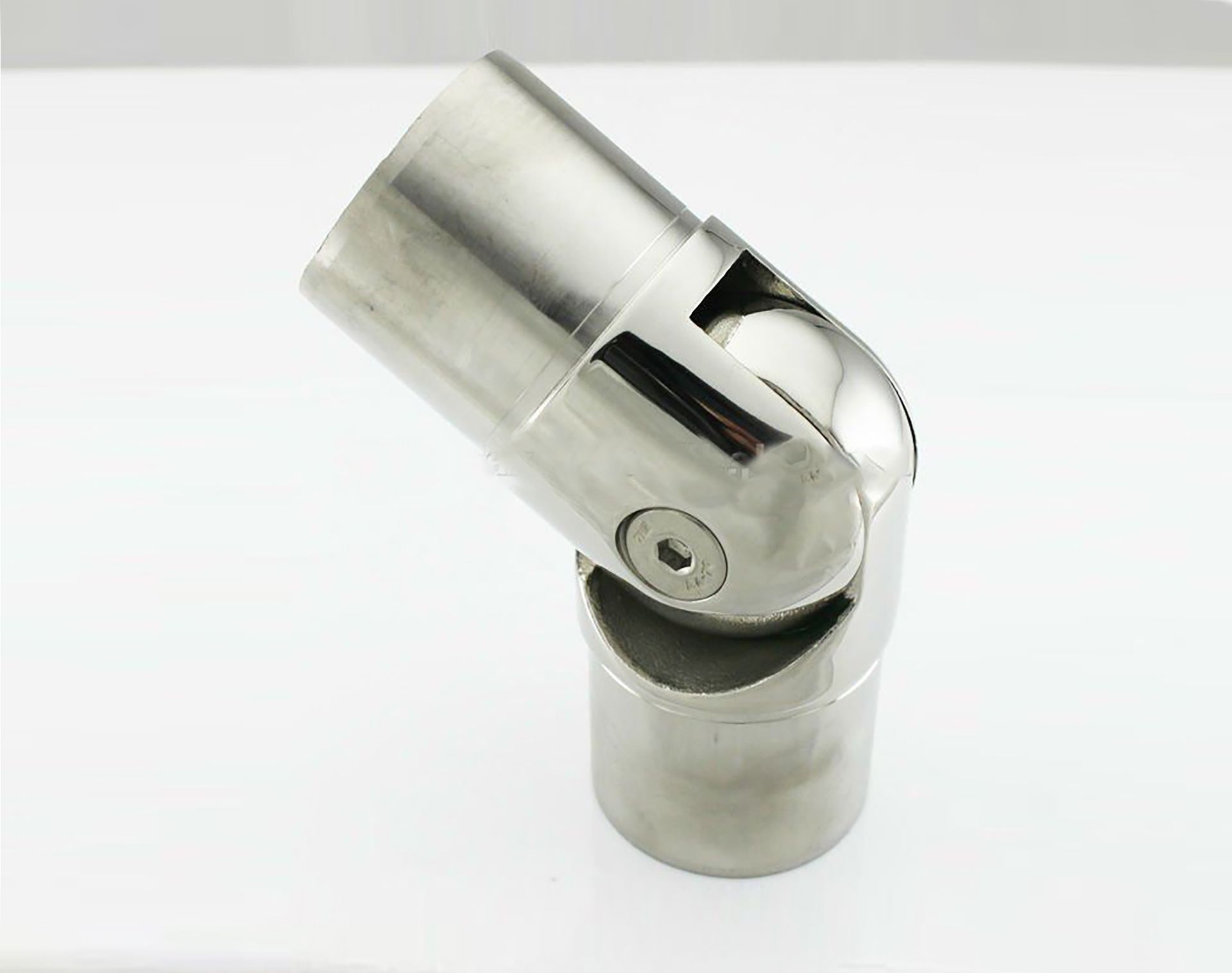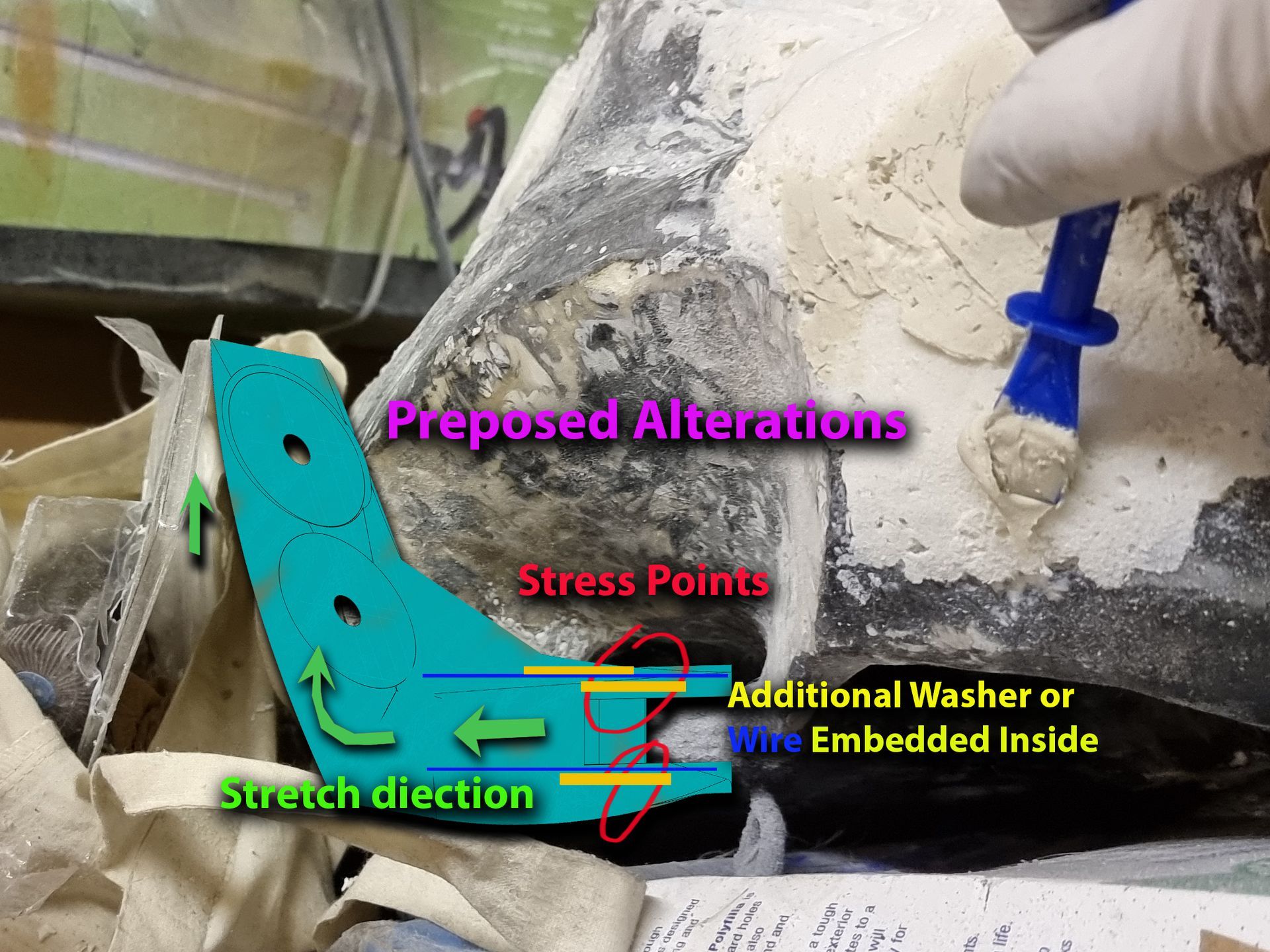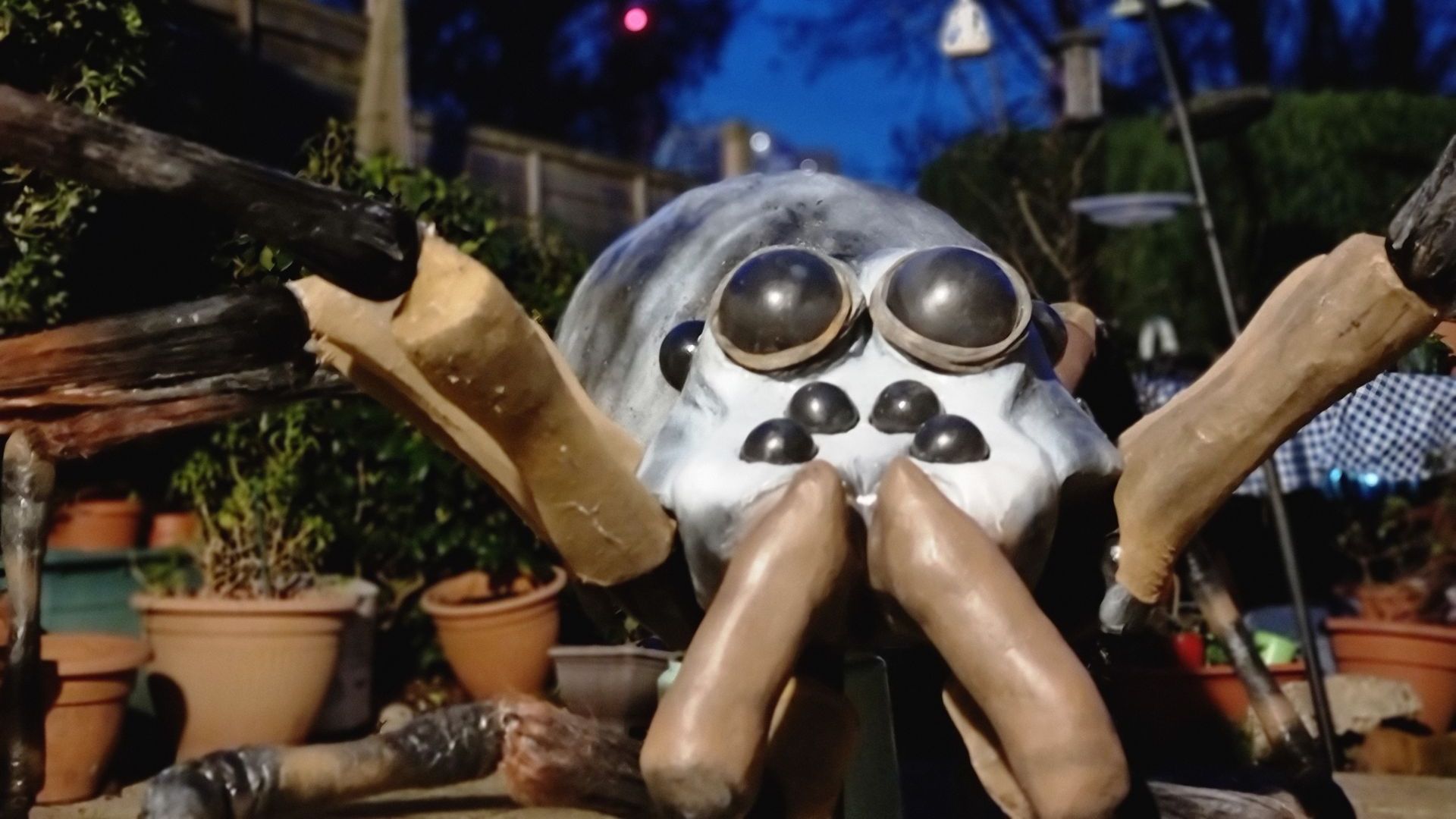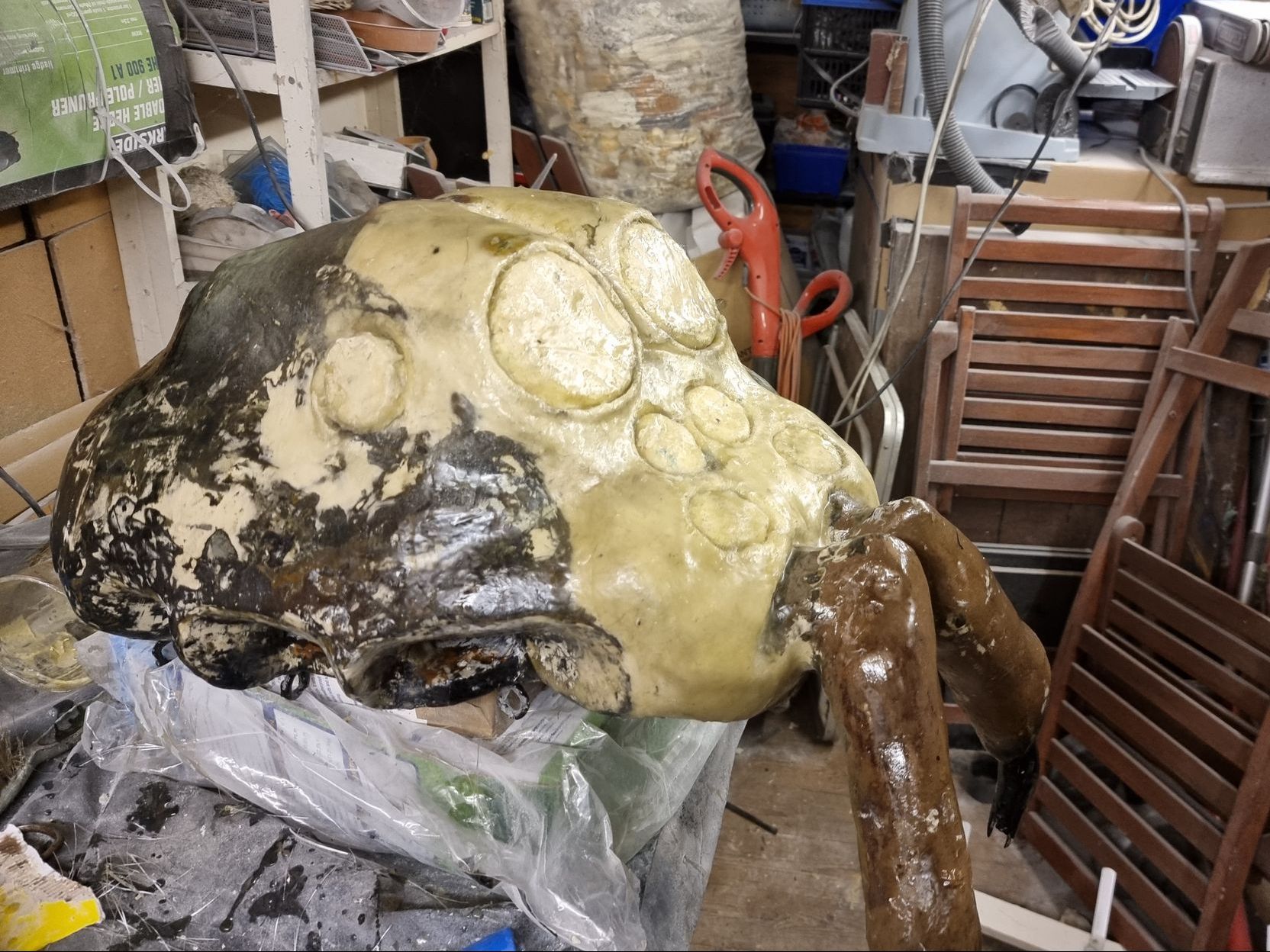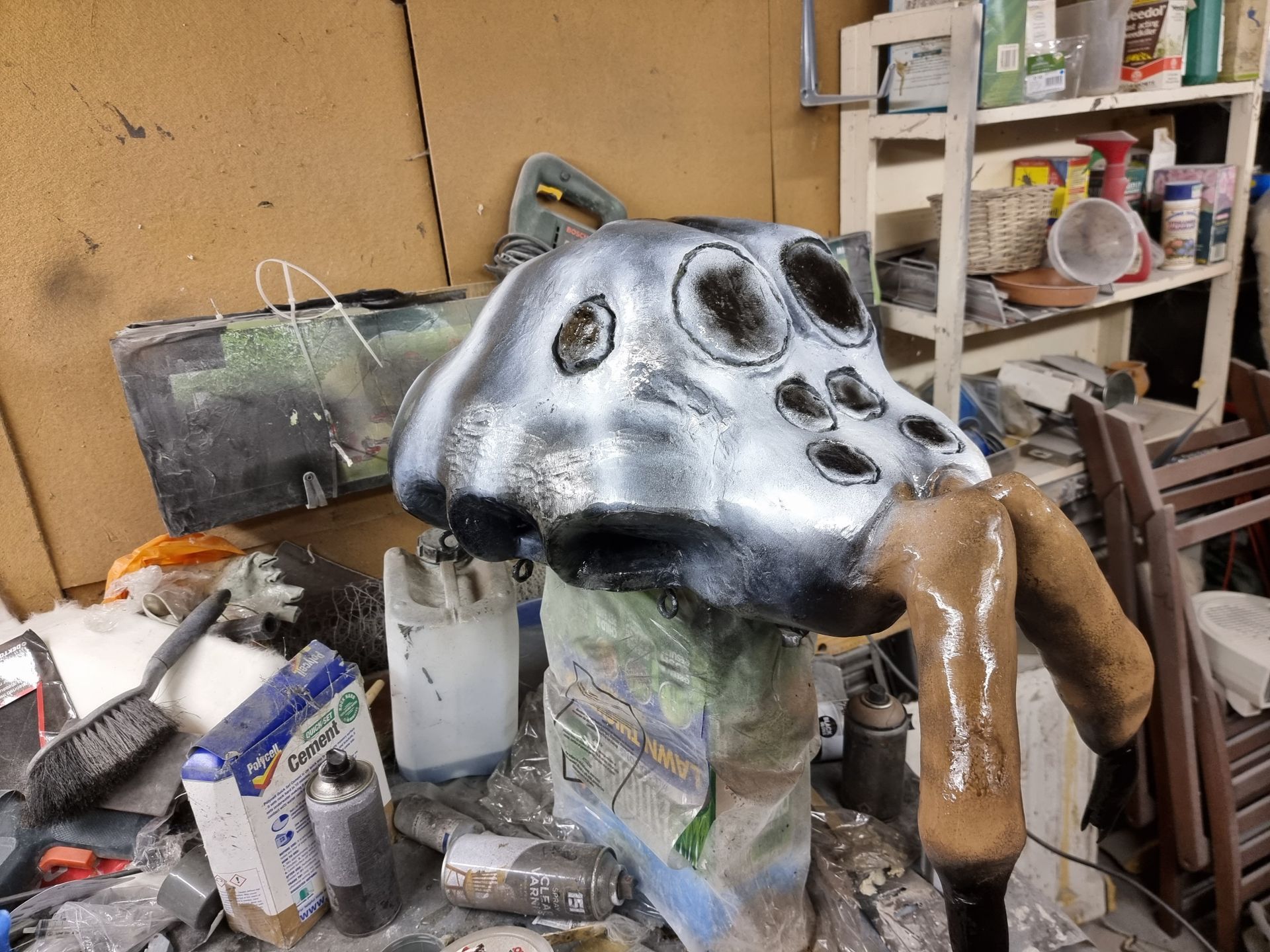Prop Tarantula Preposed
Further Development
Legs
Issues
Proposed New Leg Design
JOINTS
LEG THICKNESS
INCORRECT LEG LENGTH, ARC SHAPE AND ORDER
The current shape of the legs does not seem to work and does not match up with how real spider legs tend to pose.
Starting with the body the legs should first point up at an acute angle, then down sharply with similar length with the next leg statement, then 2 to 3 short lengths that can curve. This should in effect form something like an upside-down V triangle shape.
RESHAPING CONNECTOR COMPONENTS
In order to have the legs starting at a more vertical acute angle, the connector components will need to extend away from the body to cleat it then the connectors need to bend up at an angle much closer to 90degrees up maybe 80. This can be done with another CAD iteration.
This time it could be redesigned to be able to be cast and moulded from the first 3D print rather than multiple very time consuming and costly 3D prints
When photographing the latest working spider and trying to handle it, one leg and one of the bodies holding connectors snapped at the point just inside the washer where it camps onto the board. This indicates a weak stress point subject to sheer forced due to the weight just beyond where it connects to the board. Much like standing on a stick and pulling it up. This would be substantially increased if at first the connector is stretched away from the head board giving the forces much more leverage.
This is substantially increased in terms of how the 3D printing is achieved in layers. To minimise the need for supports and deformations as seen below the print was set up to print vertically. Whilst this works well for the 3d Printing the orientation for maximum strength needs to be lengt wise not width wise.
Think Lego as a thin tower. It the bricks used are small or loops one on top of the other like a chimney this worked well under pressure but if the force comes in sideways the tower is easily snapped as in lines with the layer breaks.
In like bricks are used to make the tower horizontally this is far more solid
The next iteration will need to structurally strengthen this point, much more it is is where the connector will be extended outwards.
This could be strengthen but sealing into the 4mm wire rods much like in reinforced concrete and over over lapping metal washers embedded over weak points. However this would add to the weight. Also a thicker unit is not necessarily stronger as 3D prints tend to be hollow. The strength is in the walls so one with 3mm wires in the right orientation should be stronger as would any that have been casts ideally with metal rods inside.
On way may be to double the depth of the washer slot so 2 can be added or a way to have them over lapping.
Then have the banana like curve to the part that holds the leg, be curved more inwards at a more near vertical angle.
LEG SURFACE
While there have been several improvements to make the leg surface more adhesive to paint such as using a wire brush to shred the shiny pipe lagging skin surface, coating the duct tape in frog masking tape, then spray gluing and coating the tape on the legs with the dust and small fragments of insulation foam.
Ideally this needs to minimise the steps, material and expense if switching to mechanical hinge or ball joints so less need for shiny non-stick tape.
Also the pipe lagging could be completely replaced with Plastazote foam or moulded and gun foam cast ings
NON-PAINTED FOLDS AND TEARS ON JOINTS
As mentioned, a problem with the brightly coloured frog tape over the joints. As the joint bends causing stretches and compression if forms fold that either tear exposing the plastic tape underneath or compress folds so the spray paint cannot get to that spot. The tape then created highlighted spots as the leg joint flexes which ruins the effect.
A A stuck and semi sewn on stretchy textured material could help here, possibly nylon tights or Lycra may help here going forward., as a skin over ball and socket and lockable hinge joints.



